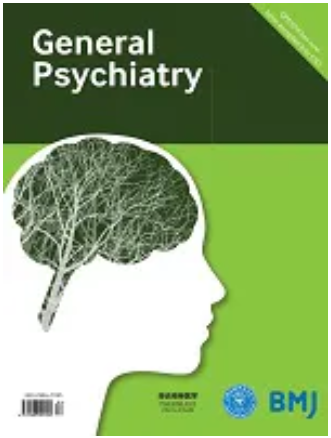Psychiatric comorbidities in children with conduct disorder: a descriptive analysis of real-world data
IF 5.3
3区 医学
Q1 PSYCHIATRY
引用次数: 0
Abstract
To the editor: Two recent advisories from the US surgeon general have underscored the unprecedented public health crisis in youth mental health and emphasised the need for “timely data collection and research to identify and respond to youth mental health needs more rapidly”.1 Increased rates of suicidal behaviour, depression and anxiety symptoms and substance use, particularly in adolescents and young adults, are part of an emerging landscape of high volumes of emergency room visits and hospitalisations for behavioural problems.2 3 Conduct disorder (CD) has emerged as an increasingly common presenting concern in adolescents and young adults receiving emergency and inpatient psychiatric care.4–6 Yet, CD remains among the least studied of paediatric psychiatric disorders, even though it is thought to be associated with a myriad of devastating social, legal and psychiatric consequences that may persist into adulthood and is frequently comorbid with other psychiatric disorders.7 Although recent studies estimate that CD affects approximately 2%–3% of the school-aged paediatric population worldwide,8 ambiguity remains about its association with other psychiatric conditions. CD is posited to be associated with increased rates of anxiety, depression, substance use and attention-deficit hyperactivity disorder (ADHD), as well as other externalising disorders, with a multisite analysis in Europe examining nearly 800 children with CD and found that more than one-third likely suffered from current ADHD symptoms and over three-fourths suffered from oppositional defiant disorder symptoms.9 Yet, estimates of comorbidity based on clinical data collected in settings that reflect actual psychiatric care, particularly in the USA, are lacking. Furthermore, many of the estimates of psychiatric comorbidity in adolescents and young adults, defined as ages 12–25, with CD, were conducted >10 years ago, preceding the ongoing paediatric mental health crisis in the USA. Untreated co-occurring psychiatric conditions in adolescents and young adults with behavioural disorders …品行障碍儿童的精神并发症:真实世界数据的描述性分析
致编辑:1 自杀行为、抑郁和焦虑症状以及药物使用率的上升,尤其是在青少年和年轻成年人中,是因行为问题导致大量急诊就诊和住院的新现象的一部分。3 行为障碍(CD)已成为青少年和年轻成年人接受急诊和住院精神病治疗时越来越常见的一种症状。4-6 然而,行为障碍仍然是儿科精神疾病中研究最少的一种,尽管人们认为它与一系列破坏性的社会、法律和精神后果有关,这些后果可能会持续到成年,并且经常与其他精神疾病合并。尽管最近的研究估计,全球约有 2%-3% 的学龄儿童受到 CD 的影响,8 但 CD 与其他精神疾病的关系仍不明确。据推测,CD 与焦虑症、抑郁症、药物使用和注意力缺陷多动障碍(ADHD)以及其他外化性障碍的发病率增加有关,欧洲的一项多点分析对近 800 名 CD 儿童进行了检查,发现超过三分之一的儿童可能患有当前的 ADHD 症状,超过四分之三的儿童患有对立违抗障碍症状。此外,许多对患有 CD 的 12-25 岁青少年和年轻成年人精神疾病合并症的估计都是在 10 年前进行的,当时美国还没有出现持续的儿科精神健康危机。患有行为障碍的青少年和年轻成人中未经治疗的并发症...
本文章由计算机程序翻译,如有差异,请以英文原文为准。
求助全文
约1分钟内获得全文
求助全文
来源期刊

General Psychiatry
医学-精神病学
CiteScore
21.90
自引率
2.50%
发文量
848
期刊介绍:
General Psychiatry (GPSYCH), an open-access journal established in 1959, has been a pioneer in disseminating leading psychiatry research. Addressing a global audience of psychiatrists and mental health professionals, the journal covers diverse topics and publishes original research, systematic reviews, meta-analyses, forums on topical issues, case reports, research methods in psychiatry, and a distinctive section on 'Biostatistics in Psychiatry'. The scope includes original articles on basic research, clinical research, community-based studies, and ecological studies, encompassing a broad spectrum of psychiatric interests.
 求助内容:
求助内容: 应助结果提醒方式:
应助结果提醒方式:


